-
 Bitcoin
Bitcoin $106,437.2012
0.82% -
 Ethereum
Ethereum $2,442.5287
0.82% -
 Tether USDt
Tether USDt $1.0005
-0.02% -
 XRP
XRP $2.1812
-0.27% -
 BNB
BNB $645.1327
0.45% -
 Solana
Solana $146.2379
0.39% -
 USDC
USDC $0.9999
-0.01% -
 TRON
TRON $0.2751
0.92% -
 Dogecoin
Dogecoin $0.1662
-0.23% -
 Cardano
Cardano $0.5827
-1.22% -
 Hyperliquid
Hyperliquid $37.5225
0.04% -
 Bitcoin Cash
Bitcoin Cash $479.0877
4.02% -
 Sui
Sui $2.7846
-3.27% -
 Chainlink
Chainlink $13.3576
0.84% -
 UNUS SED LEO
UNUS SED LEO $9.0252
-1.20% -
 Stellar
Stellar $0.2455
-1.07% -
 Avalanche
Avalanche $18.0680
-1.81% -
 Toncoin
Toncoin $2.8948
-1.07% -
 Shiba Inu
Shiba Inu $0.0...01164
-1.65% -
 Litecoin
Litecoin $85.0637
-0.06% -
 Hedera
Hedera $0.1526
-0.89% -
 Monero
Monero $316.2941
0.78% -
 Ethena USDe
Ethena USDe $1.0003
-0.04% -
 Polkadot
Polkadot $3.4113
-1.87% -
 Dai
Dai $1.0000
-0.01% -
 Bitget Token
Bitget Token $4.4488
5.16% -
 Uniswap
Uniswap $7.1740
3.09% -
 Pi
Pi $0.5968
11.43% -
 Pepe
Pepe $0.0...01010
-0.65% -
 Aave
Aave $264.3189
0.40%
What does it mean that the fractal indicator shows that 5 consecutive high points are gradually rising?
A rising sequence of five fractal highs in crypto trading signals a strong uptrend, indicating sustained buyer momentum and potential trend continuation, especially when confirmed by volume and other indicators like RSI or MACD.
Jun 25, 2025 at 11:07 am
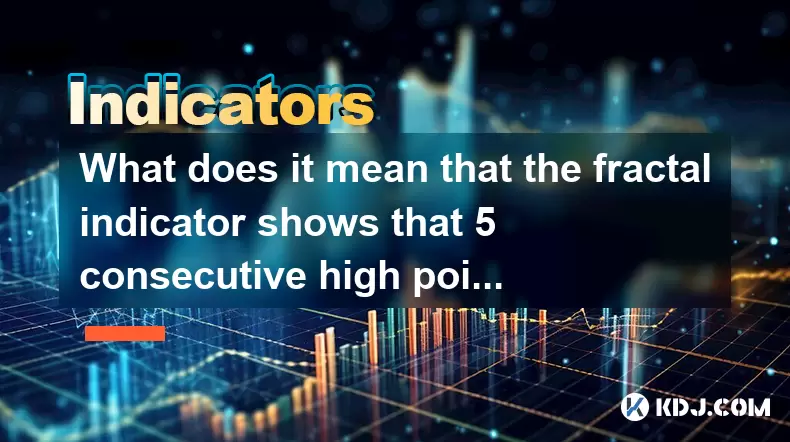
Understanding the Fractal Indicator in Cryptocurrency Trading
The fractal indicator is a popular technical analysis tool used by traders in the cryptocurrency market to identify potential reversal points in price action. It is based on a mathematical concept known as fractals, which are repeating patterns that occur across different time frames. In trading, these patterns help traders spot support and resistance levels.
In crypto markets, where volatility is high and trends can change rapidly, the fractal indicator helps traders visualize possible turning points. A fractal is formed when there is a peak or trough surrounded by two lower highs or higher lows respectively. This pattern suggests that the current trend may be losing momentum and could reverse.
What Does a Rising Sequence of 5 High Points Mean?
When the fractal indicator shows that 5 consecutive high points are gradually rising, it indicates a specific pattern in price behavior. Each high point represents a local maximum that is higher than its immediate neighbors. If this sequence continues for five bars or candles, it signals a strong uptrend with consistent momentum.
This situation typically occurs during bullish phases in the market. Traders interpret this as a sign that buyers are in control and that each pullback is met with renewed buying pressure. However, because cryptocurrencies often experience sharp reversals after prolonged moves, this pattern should not be viewed in isolation but rather in combination with other indicators like RSI or MACD.
How to Identify This Pattern Using the Fractal Indicator
To detect this pattern on your chart:
- Ensure the fractal indicator is applied correctly to your trading platform (e.g., MetaTrader, TradingView).
- Look for a series of five candlesticks or bars where each successive high is higher than the previous one.
- Each high must be confirmed by the fractal formation, meaning the middle candle must be the highest among a group of five.
Here’s how to verify the pattern step-by-step:
- Zoom into your chart to clearly see individual candlesticks.
- Place the fractal indicator on the chart.
- Scan from left to right for sequences where each new high is part of a fractal structure.
- Confirm that at least five such fractal highs have formed sequentially.
- Check volume if available — rising volume during these highs supports the strength of the trend.
This verification process ensures you're seeing actual fractal formations and not just random price peaks.
Trading Implications of This Pattern in Crypto Markets
In the context of cryptocurrency trading, spotting five rising fractal highs can offer valuable insights. It may indicate:
- Continuation of an uptrend: Especially if the price hasn’t yet reached a significant resistance level.
- Momentum confirmation: Each new high being higher than the last shows sustained buyer interest.
- Potential exhaustion signal: After five consecutive rising highs, the trend might start showing signs of fatigue, especially if oscillators like RSI are overbought.
Traders can use this information to either hold positions or prepare for a possible reversal. Entry points for long trades may still exist, but caution is advised near key resistance zones or Fibonacci extension levels.
Combining This Pattern with Other Indicators
Because no single indicator provides a complete picture, combining the fractal signal with others enhances accuracy. Consider using:
- Moving Averages: To confirm the overall trend direction.
- Relative Strength Index (RSI): To check for overbought or oversold conditions.
- Volume Profile: To assess whether increasing volume supports the rising highs.
- Support/Resistance Levels: To determine if the price is approaching a critical zone.
For example, if the fractal shows five rising highs while RSI remains below 70, it suggests a healthy uptrend. But if RSI crosses above 70 and starts forming bearish divergences, the trader should be cautious even though the fractal pattern is intact.
Practical Application in Real-Time Trading
Applying this pattern in live trading requires discipline and strategy. Here’s how to practically approach it:
- Mark the fractal highs on your chart and draw a line connecting them to visualize the trend.
- Wait for a fractal high to be confirmed before entering a trade.
- Use stop-loss orders just below the most recent fractal low to manage risk.
- Trail your stop-loss upward as new fractal highs form.
- Watch for bearish divergence between price and momentum indicators.
By following this method, traders can ride the uptrend while minimizing exposure to sudden reversals. This becomes particularly important in fast-moving crypto markets where emotional decisions can lead to losses.
Frequently Asked Questions
Q1: Can the fractal indicator be used effectively on all timeframes?
Yes, the fractal indicator works on all timeframes, but it tends to generate more reliable signals on higher timeframes like 4-hour or daily charts due to reduced noise compared to lower timeframes like 1-minute or 5-minute intervals.
Q2: What should I do if the fifth high fails to form properly?
If the fifth high doesn't surpass the fourth, it may indicate weakening momentum. At that point, traders should reassess the trend and consider tightening stops or exiting partially.
Q3: Is the fractal indicator sufficient on its own for making trading decisions?
No, the fractal indicator should always be used alongside other tools like moving averages, volume analysis, or oscillators to increase the probability of successful trades.
Q4: How does the fractal indicator differ from pivot points?
Fractals are self-repeating structures identified algorithmically, whereas pivot points are calculated mathematically based on prior price data. Pivot points provide static levels, while fractals adapt dynamically to price action.
Disclaimer:info@kdj.com
The information provided is not trading advice. kdj.com does not assume any responsibility for any investments made based on the information provided in this article. Cryptocurrencies are highly volatile and it is highly recommended that you invest with caution after thorough research!
If you believe that the content used on this website infringes your copyright, please contact us immediately (info@kdj.com) and we will delete it promptly.
- Shiba Inu, Dogecoin, and Meme Coins: What's the Hype in 2025?
- 2025-06-25 16:25:12
- JasmyCoin's Wild Ride: 6x Setup or Just a Mirage?
- 2025-06-25 16:25:12
- Mastercard's Stablecoin Integration: Revolutionizing On-Chain Commerce, NY Style
- 2025-06-25 16:45:12
- Malaysia's Cash Conundrum: When Coin Refusal Sparks Debate
- 2025-06-25 16:45:12
- Truth Social, Bitcoin ETF, Ethereum ETF: Trump Media's Crypto Play
- 2025-06-25 17:05:13
- Syrup Price Surges as Maple Finance AUM and Revenue Skyrocket: A Deep Dive
- 2025-06-25 17:25:13
Related knowledge
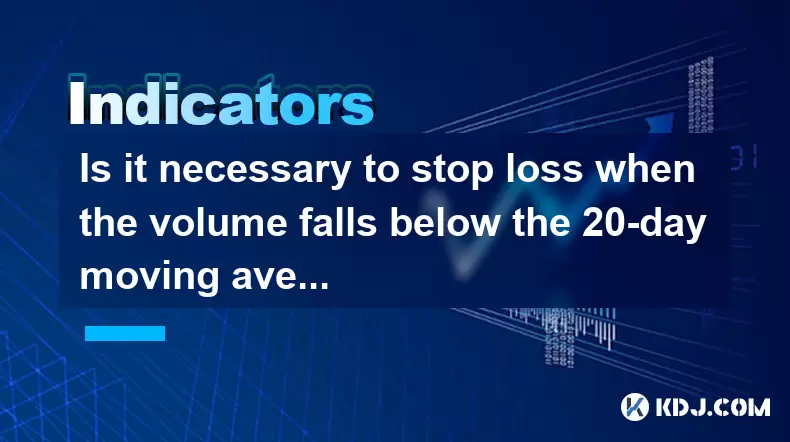
Is it necessary to stop loss when the volume falls below the 20-day moving average?
Jun 25,2025 at 05:00pm
Understanding the 20-Day Moving Average in Cryptocurrency TradingIn cryptocurrency trading, technical analysis plays a pivotal role in decision-making. One of the most commonly used indicators is the 20-day moving average (MA). This metric calculates the average price of an asset over the past 20 days and helps traders identify trends and potential reve...
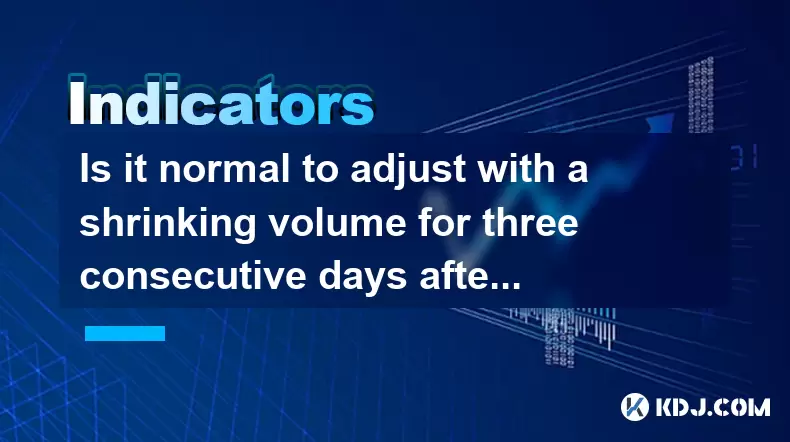
Is it normal to adjust with a shrinking volume for three consecutive days after breaking through the previous high with a large volume?
Jun 25,2025 at 03:49pm
Understanding Volume and Price Relationship in Cryptocurrency TradingIn cryptocurrency markets, volume is a critical metric that reflects the number of assets traded over a specific period. When a cryptocurrency breaks through a previous high with large volume, it typically signals strong buying pressure and market confidence. However, it's not uncommon...
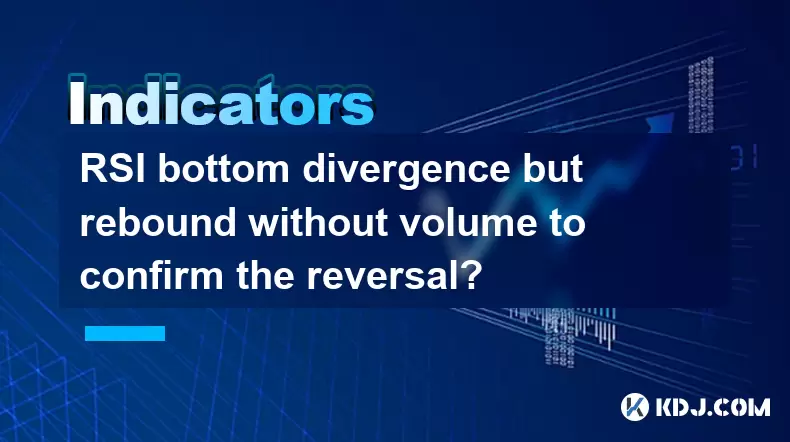
RSI bottom divergence but rebound without volume to confirm the reversal?
Jun 25,2025 at 04:42pm
Understanding RSI Bottom DivergenceRelative Strength Index (RSI) is a momentum oscillator used in technical analysis to measure the speed and change of price movements. RSI bottom divergence occurs when the price of an asset makes a new low, but the RSI does not confirm that low and instead forms a higher low. This pattern suggests weakening downward mo...
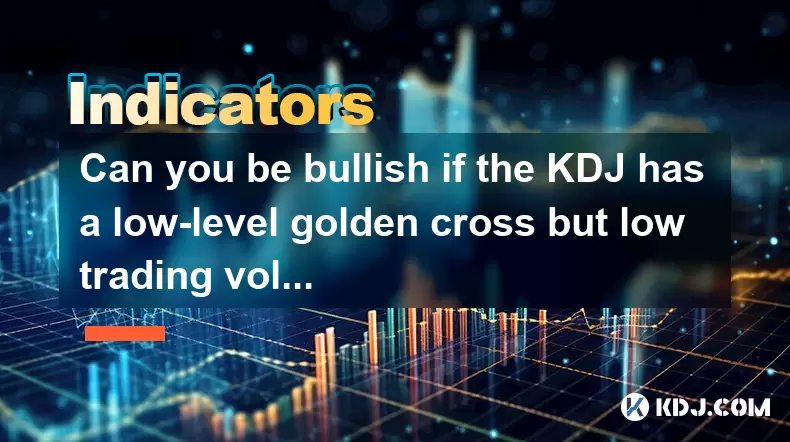
Can you be bullish if the KDJ has a low-level golden cross but low trading volume?
Jun 25,2025 at 03:14pm
Understanding the KDJ Indicator in Cryptocurrency TradingThe KDJ indicator, also known as the stochastic oscillator, is a momentum-based technical analysis tool widely used in cryptocurrency trading. It comprises three lines: the %K line (fast stochastic), the %D line (slow stochastic), and the J line (divergence value). These lines oscillate between 0 ...
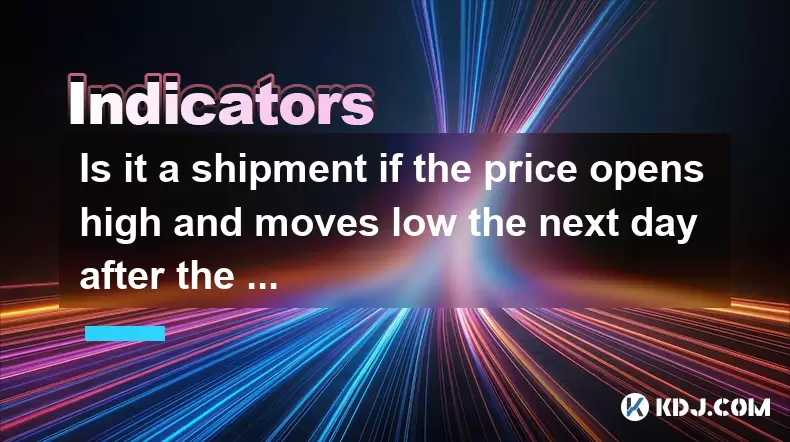
Is it a shipment if the price opens high and moves low the next day after the daily limit with huge volume?
Jun 25,2025 at 12:56pm
Understanding the Concept of a Shipment in Cryptocurrency TradingIn cryptocurrency trading, the term shipment refers to a scenario where large volumes of an asset are sold off rapidly, often leading to a significant price drop. This is typically associated with whale activity or coordinated selling by major holders. When traders observe certain patterns...
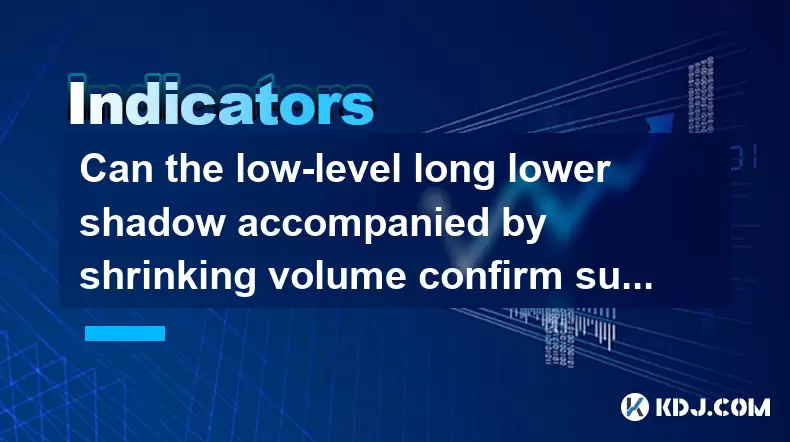
Can the low-level long lower shadow accompanied by shrinking volume confirm support?
Jun 25,2025 at 03:08pm
Understanding the Long Lower Shadow Candlestick PatternA long lower shadow candlestick pattern occurs when a candle closes near its high but has a significantly long lower wick, indicating that sellers pushed prices down during the session but were met with strong buying pressure that drove the price back up. This pattern is often seen as a potential si...

Is it necessary to stop loss when the volume falls below the 20-day moving average?
Jun 25,2025 at 05:00pm
Understanding the 20-Day Moving Average in Cryptocurrency TradingIn cryptocurrency trading, technical analysis plays a pivotal role in decision-making. One of the most commonly used indicators is the 20-day moving average (MA). This metric calculates the average price of an asset over the past 20 days and helps traders identify trends and potential reve...

Is it normal to adjust with a shrinking volume for three consecutive days after breaking through the previous high with a large volume?
Jun 25,2025 at 03:49pm
Understanding Volume and Price Relationship in Cryptocurrency TradingIn cryptocurrency markets, volume is a critical metric that reflects the number of assets traded over a specific period. When a cryptocurrency breaks through a previous high with large volume, it typically signals strong buying pressure and market confidence. However, it's not uncommon...

RSI bottom divergence but rebound without volume to confirm the reversal?
Jun 25,2025 at 04:42pm
Understanding RSI Bottom DivergenceRelative Strength Index (RSI) is a momentum oscillator used in technical analysis to measure the speed and change of price movements. RSI bottom divergence occurs when the price of an asset makes a new low, but the RSI does not confirm that low and instead forms a higher low. This pattern suggests weakening downward mo...

Can you be bullish if the KDJ has a low-level golden cross but low trading volume?
Jun 25,2025 at 03:14pm
Understanding the KDJ Indicator in Cryptocurrency TradingThe KDJ indicator, also known as the stochastic oscillator, is a momentum-based technical analysis tool widely used in cryptocurrency trading. It comprises three lines: the %K line (fast stochastic), the %D line (slow stochastic), and the J line (divergence value). These lines oscillate between 0 ...

Is it a shipment if the price opens high and moves low the next day after the daily limit with huge volume?
Jun 25,2025 at 12:56pm
Understanding the Concept of a Shipment in Cryptocurrency TradingIn cryptocurrency trading, the term shipment refers to a scenario where large volumes of an asset are sold off rapidly, often leading to a significant price drop. This is typically associated with whale activity or coordinated selling by major holders. When traders observe certain patterns...

Can the low-level long lower shadow accompanied by shrinking volume confirm support?
Jun 25,2025 at 03:08pm
Understanding the Long Lower Shadow Candlestick PatternA long lower shadow candlestick pattern occurs when a candle closes near its high but has a significantly long lower wick, indicating that sellers pushed prices down during the session but were met with strong buying pressure that drove the price back up. This pattern is often seen as a potential si...
See all articles























































































